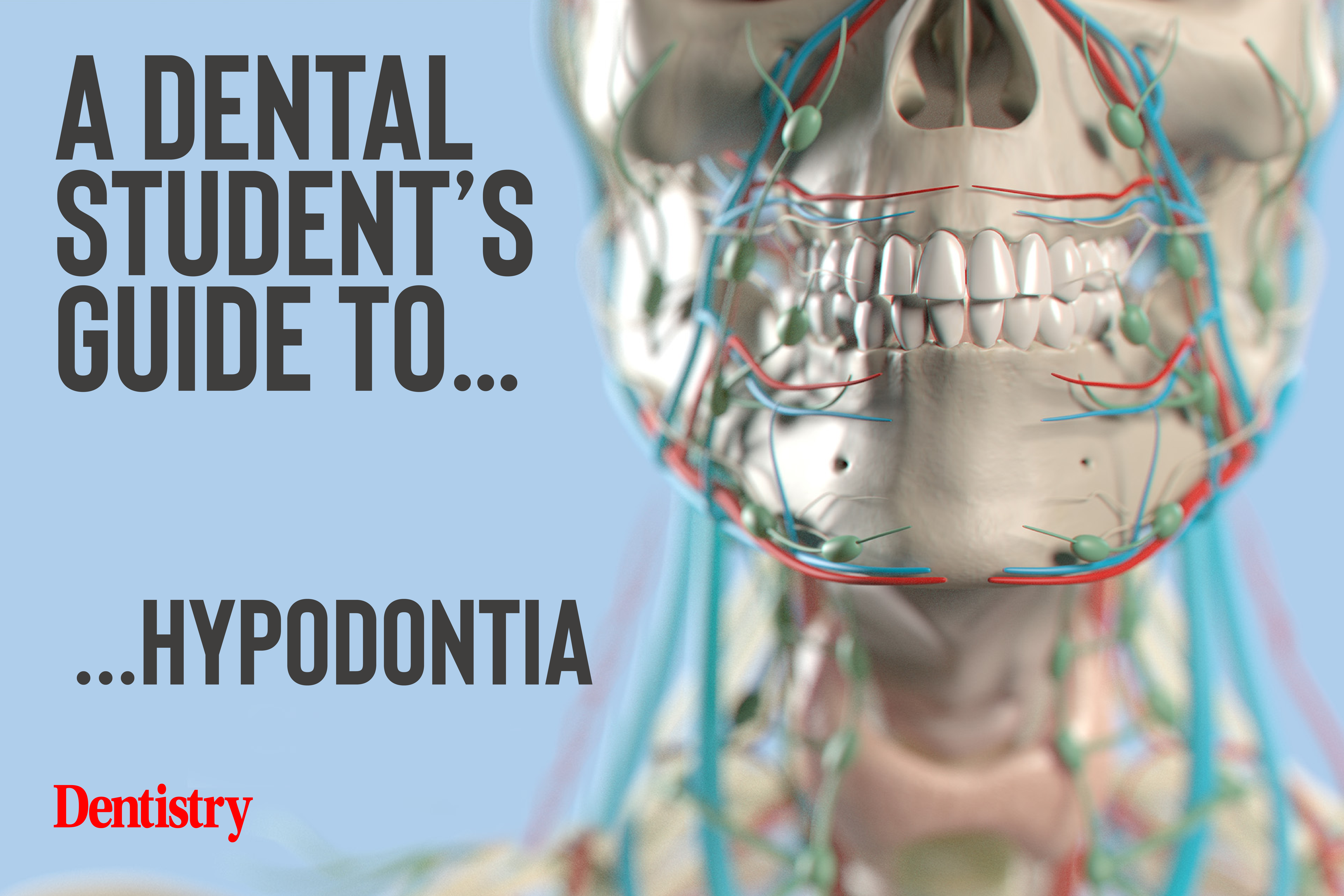
For this month’s Dental Student’s Guide, Hannah Hook breaks down hypodontia, including its causes and how to identify it.
Hypodontia is the most common type of craniofacial malformation, affecting between 1.6-36.5% of the population (this percentage varies based on the population studied).
It refers to the absence of up to five primary or permanent teeth. Third molars are not included in this, and their absence does not constitute hypodontia.
Generally, affected individuals will be missing one to two teeth, the most commonly affected teeth being the mandibular second premolars and the maxillary lateral incisors.
If there are more than five missing teeth, this is termed oligodontia. Where there is a complete absence of teeth, this is anodontia.
As hypodontia is relatively common, you will likely see hypodontia patients in general practice who will require onward referral to orthodontic secondary care services.
Identifying hypodontia
Early identification of missing teeth is key to allow prompt planning and treatment.
There are also a number of associated dental anomalies that may be present in patients with hypodontia. These are listed below.
- Cleft lip +/- palate
- Microdontia
- Short roots
- Dental crowding
- Malpositioned teeth
- Delayed formation
- Delayed eruption
- Enamel hypoplasia.
It is therefore important to be aware of the presentation of hypodontia, accompanying dental anomalies and the genetic conditions that it may be associated with.
Causes
The causes of hypodontia can be broadly divided into non-syndromic (an isolated condition) or syndromic (associated with a syndrome).
Non-syndromic hypodontia
- The most common form of congenital tooth absence
- More prevalent in the permanent dentition
- Hypodontia of primary teeth is rare
- If a primary tooth is absent, it is likely that its permanent successor will also be absent
- 80% of cases can be attributed to a mutation in the genes involved in tooth and craniofacial development
- 20% of cases are attributed to exogenous factors during the stages of tooth bud development, such as exposure to certain medications, maternal rubella virus infection, chemotherapy and radiotherapy.
Syndromic hypodontia
- Hypodontia is included as an anomaly in over 60 syndromic conditions
- The syndromic conditions most commonly associated with hypodontia include ectodermal dysplasia, cleft lip +/- palate, Down syndrome, Pierre-Robin sequence and Van der Woude syndrome.
Ectodermal dysplasia
- A large group of inherited disorders that affects the development of two or more tissues from the endoderm
- Tissues affected usually include teeth, hair follicles, sebaceous glands, eccrine glands and nails
- Patients with ectodermal dysplasia may suffer from hypodontia and abnormalities in shape/size of teeth
- May also have cleft lip +/- palate.
Cleft lip +/- palate
- Orofacial birth defect
- Failure of fusion of the lip +/- the palate
- Cleft lip usually occurs between the 4th and 7th weeks of pregnancy
- Cleft palate usually occurs between the 6th and 9th weeks of pregnancy
- Cleft lip +/- palate may impact a child’s feeding and speech
- Teeth in the line of the cleft may often be absent.
Down syndrome
- Also referred to as trisomy 21
- Patients are born with an extra copy of chromosome 21
- The genetic material from the extra chromosome results in developmental changes
- Patients with down syndrome may experience hypodontia, delayed eruption of teeth, microdontia, shortened roots and crowding.
Pierre-Robin sequence
- Rare congenital birth defect, the exact cause is unknown
- Patients experience micrognathia of the mandible and displacement of the tongue towards the back of the mouth
- Displacement of the tongue into the palate whilst the foetus is developing leads to cleft palate
- As described above, cleft palate can result in hypodontia of teeth in the line of the cleft.
Van der Woude syndrome
- Genetic disorder in which patients experience lower lip pits and cleft lip +/- palate (or cleft palate alone)
- Patients are likely to experience both hypodontia and maxillary hypoplasia.
Key Points
- It is a relatively common condition
- Teeth most commonly affected are the mandibular second premolars and the maxillary lateral incisors
- Patients should be identified early and referred to secondary care
- The causes are either non-syndromic or syndromic
- Non-syndromic hypodontia is most commonly due to a genetic mutation
- The most common syndromic cause of hypodontia is ectodermal dysplasia.
Contact [email protected] for references.
Catch up with Hannah’s previous Dental Student Guides to…
Follow Dentistry.co.uk on Instagram to keep up with all the latest dental news and trends.


